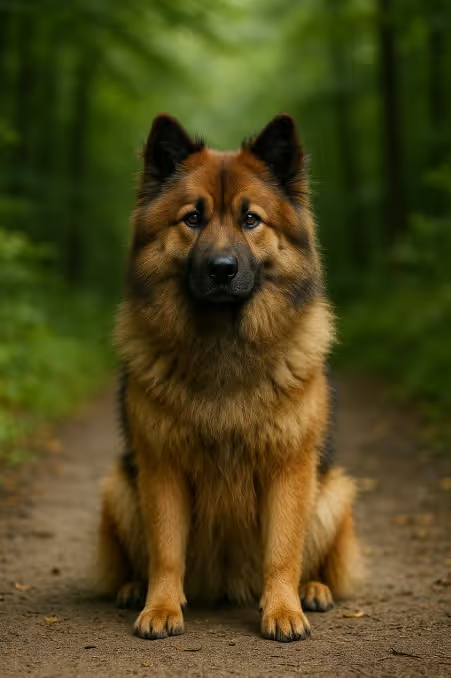The Eurasier is a calm, devoted, and intelligent companion dog known for its dignified nature and striking good looks. Originally bred to be a well-balanced family dog, this spitz-type breed is affectionate with loved ones but reserved with strangers. Eurasiers do best in homes where they can be close to their people, thrive on routine, and enjoy moderate daily activity. Ideal for families and individuals seeking a gentle, adaptable companion.

The Eurasier was developed in Germany during the 1960s by Julius Wipfel, who sought to create a family-oriented companion dog with the best traits of spitz-type breeds. Initially a cross between the Chow Chow and the Wolfspitz (Keeshond), the breed was later refined with the addition of Samoyed blood. The result was a balanced, even-tempered dog with a plush coat and wolf-like features. Officially recognized by the FCI in 1973, the breed remains relatively rare but admired for its temperament and appearance.
Eurasiers are medium-sized, well-proportioned dogs with a thick double coat and expressive almond-shaped eyes.
Eurasiers are relatively low maintenance despite their plush coat.
Eurasiers enjoy daily walks and mental stimulation but don’t require extreme exercise.
Smart and sensitive, Eurasiers respond best to gentle, consistent training methods.
A balanced, portion-controlled diet supports this breed’s overall health and coat quality.
Generally a healthy breed, though some genetic conditions may appear.
Eurasiers are a rare breed in North America, so finding a responsible breeder is key.
Are Eurasiers good family dogs?
Yes, they are gentle, loyal, and patient with children when properly socialized.
Do Eurasiers bark a lot?
No, they are generally quiet and alert, barking only when necessary.
Are Eurasiers good with other pets?
Usually yes—with proper introductions and socialization from a young age.
Can Eurasiers live in apartments?
Yes, with enough exercise and mental stimulation, they adapt well to apartment living.
Do they like strangers?
They are reserved and aloof with strangers but not aggressive.
Do Eurasiers shed a lot?
They shed moderately year-round and heavily during coat blow periods twice a year.
Are they easy to train?
Yes, if training is gentle, consistent, and respectful of their sensitivity.
Are Eurasiers hypoallergenic?
No, they are not hypoallergenic and do shed dander.